|
2005
The erosion has created a channelized area, which will reduce the
island by about a ˝ acre during the 2005-06 winter if nothing is
done by winter. Dr. Blueford brought this up to the City of
Fremont, Annabell Holland,
Director of Parks and Recreation. After several meetings it was
agreed that the Math Science Nucleus could take the lead on using
community groups for restoration with the help of staff from the
City, especially to transport people and supplies to the island.
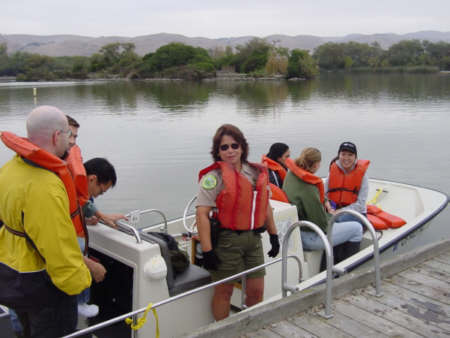 |
| Ranger Sandy Ferriera leads a
group of California State Univeristy, East Bay out to
Duck Island (in background) to work on erosion control
along the banks. |
Since the need
is critical the Math Science Nucleus has teamed up with two Eagle
Scout projects and California State East Bay Teacher Education and
completed 3 projects in October, 2005 to try and stop the erosion
for the upcoming winter as a stop gap strategy.
Tules
from Tule Ponds at Tyson
Lagoon (a wetland Facility managed and being restored by the
Nucleus) was used as “plugs” to not only stop erosion by helping to
capture silt and mud from the eroding banks.
|
Janren Liu |
Troop 468 |
Transplanting Tules from Tule Pond (south) for Restoration
on Duck Island, Lake Elizabeth (complete, October, 2005) |
|
Justin Hsu |
Troop 468 |
Transplanting Tules from Tule Pond (south) for Restoration
on Duck Island, Lake Elizabeth (complete, October,
2005) |
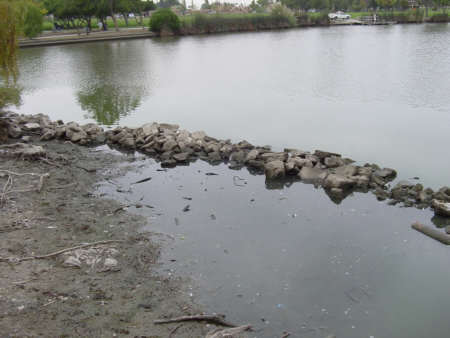 |
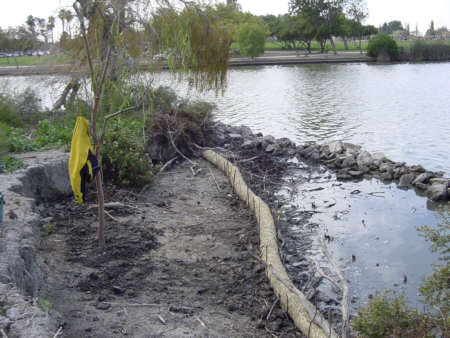 |
Before
Storms through wave action have cause the bank of the
entire island to erode valuable land. Trees and
tules once lined this area. The root system helps
to bind the soil |
After
Restoration includes planting willows and planting
tule to increase sedimentation in this area.
The root systems of both plants will help decrease
erosion. |
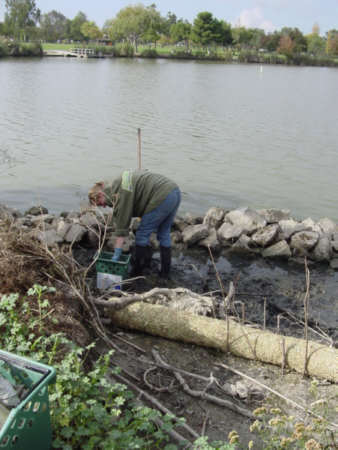 |
 |
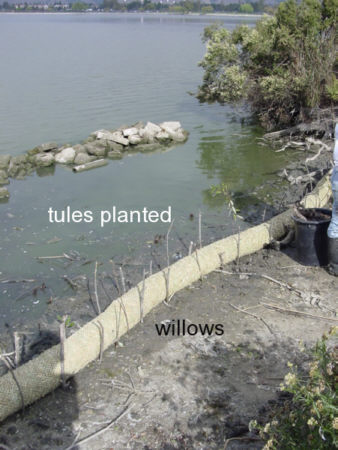 |
| Teacher plants tules between straw
waddles and rip rap (rocks) |
Willow stakes help to keep wattles
in place and will grow into young willow trees |
Tules and willows helping to trap
sediments to help stop erosion |
2006 Project
[Watershed Home]
[Lake Elizabeth]
|

